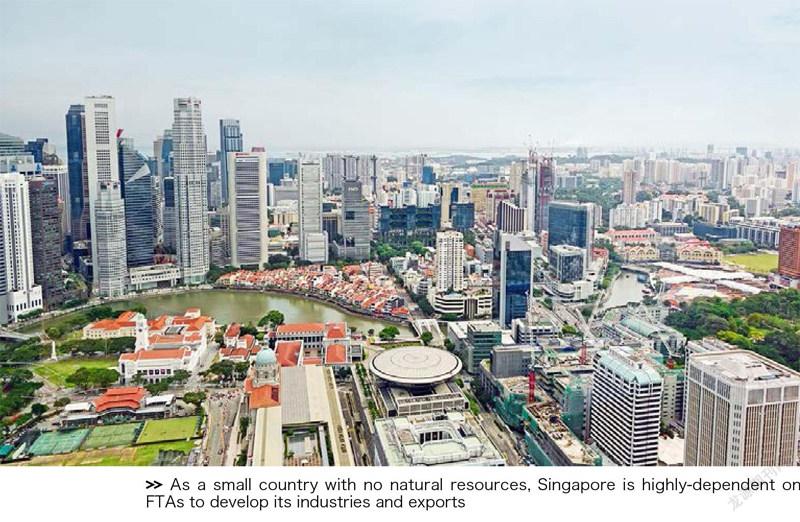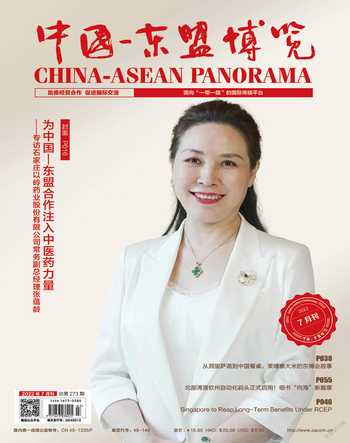Singapore to Reap Long-Term Benefits Under RCEP

Singapore was the first country to ratify the Regional Comprehensive Economic Partnership (RCEP), the free trade agreement that includes the 10 ASEAN members (Brunei, Cambodia, Indonesia, Laos, Malaysia, Myanmar, the Philippines, Singapore, Thailand, Vietnam) and Australia, China, Japan, New Zealand, and the Republic of Korea.
Through the RCEP, ASEAN hopes to transform from a net importer to a net exporter of goods and services and become the new engine of growth in Asia. For Singapore, the country hopes to reap long-term benefits under the RCEP by integrating further into global supply chains and strengthening the city-state’s position as a financial and business hub in the Asia-Pacific.
What are the key benefits for Singapore businesses under the RCEP?
Reduction of tariffs
Signatories to the RCEP can enjoy an average tariff elimination of about 92% for traded goods, progressively over the next 20 years. This will be advantageous for Singapore as an export-oriented producer of high-value goods; the RCEP will enable preferential market access, allowing Singaporean producers to be competitive in regional markets.
Moreover, as a small country with no natural resources, Singapore is highly-dependent on free trade agreements (FTA) to develop its industries and exports. The country already has a network of 13 bilateral and 11 regional FTAs that have transformed its supply chains since the 1990s, enabling Singaporean companies to venture abroad as well as liberating small and medium enterprises from the constraints of the country’s small domestic market.
A common rule of origin
The Agreement sets a unified framework for a single rule of origin to be applied for every product from the 15 member countries in the RCEP. This means Singapore manufacturers can accumulate raw and semi-raw materials under the Regional Value Content (RVC) criterion from all 15 RCEP countries to count as originating content. The RVC rule requires that a product must have at least 40% RVC to obtain a certificate of origin for preferential tariffs.
Without the harmonization rules of the RCEP, businesses would often use multiple FTAs to meet the different criteria across various supply chains needed to enjoy preferential customs duties. At times, this can be an administrative burden to determine the origin of materials and increases the risks of non-compliance when claiming the preferential duties under an FTA. The authorization of a single rule of origin under RCEP harmonizes the procedures for required documents, local content, and certificate of origin for supply chains across its members. A report by Allianz estimates that the reduced export costs would boost export value among Singapore and the signatories by around US$ 90 billion on average annually.
Expansion of services market access
Compared to existing ASEAN+1 FTAs, the RCEP took an extra step to liberalize services by introducing the negative list approach. Contrary to a positive list approach, the negative list only requires governments to exclude certain services and investment sections from RCEP participation. Otherwise, it is automatically understood that all services and investments will be eligible for market access. Seven RCEP members, including Singapore, have opted for the “negative list” while the remaining eight members who chose the “positive list” approach are required to adopt a negative list within six years of the RCEP coming into force.
In addition, the RCEP aims for at least 65% of service sectors (e.g. finance, telecommunications, distribution, and logistic services, among others) to be open to foreign investors. This is unprecedented liberalization that would facilitate the greater export of Singapore’s key financial and transport services to diverse markets.
Tapping into regional industrial supply chains
Manufacturing
Electronics manufacturing alone accounts for 8% of Singapore’s total GDP, 38% of total asset investments in 2020, and 20% of the total manufacturing jobs. Singapore is also a high-tech manufacturing hub that does not only account for 11% global market share for semiconductor output but also exports mobile phones, digital cameras, and televisions. The common rule of origin under the RCEP would benefit high-tech electronics value chains in which intermediate components are imported from other RCEP countries. Further, Singaporean manufacturers can benefit from increased imports and exports of electronic integrated circuits and micro assemblies from and to high-tech and mid-stream producers in Malaysia, South Korea, China, and the Philippines as well as setting up manufacturing plants in low labor cost countries, such as Cambodia, Laos, and Myanmar.
Chemical and petroleum production is also projected to grow as the industry continues to enjoy improved access to trade and energy links along the Chinese Belt and Road Initiative (BRI) under the RCEP. Singapore has over 100 global chemical firms and two of its islands, Jurong Island and Bukom Island, are entirely designed for the petrochemical industry. The country is also dubbed “the undisputed oil hub in Asia” and was the fourth-largest global exporter of refined petroleum in 2020, with exports totaling US$ 27 billion. Singapore had an export value of US$ 5.99 billion in chemical products to China in 2021.
Financial services
Singapore is a global financial hub that hosts over 200 multinational and local banks. A surge in demand for financial services would accompany the growing trade and investment flows under the RCEP as firms seek to manage banking, investment, and insurance, of which Singapore would be the primary provider for such services. The RCEP agreement also includes a separate section for financial services liberalization in which discriminatory regulations against foreign and domestic financial suppliers are removed. According to a report by Ernst & Young, a fair level playing field would attract the market entry of cross-border fintech platforms providing services in payments, insurance, and lending. They could play a key role in providing financial services to ASEAN’s underbanked and unbanked populations, which comprise 50% of the region’s total population.
Digital economy
The RCEP establishes a framework for e-commerce, digital services, and digital trade. The RCEP commits to the protection of consumers’ personal information, paperless trading, electronic authentication systems, and cybersecurity. The framework complements Singapore’s vision to become a global digital hub for the region.
A report by Google, Temasek, and Bain & Company state that Singapore’s digital economy could have a gross merchandise value of US$ 27 billion by 2025, an increase from US$ 15 billion in 2021. Despite this number being small compared to its ASEAN peers, the country continues to be an attractive hub for the regional internet economy, especially for digital services such as e-commerce, fintech, and e-commerce enablers. Further, Singapore is the most digitized economy in ASEAN, and according to Deloitte, Singaporean companies were the most digitalized across trading, sales, payments, logistics, and production.
Singapore is the location of choice for the regional headquarters of several ASEAN e-commerce unicorns. Additionally, Singapore has 15 unicorns under its belt, with several such as Grab, Lazada, Ninja Van, and Shopee, all valued at over US$ 1 billion.
Singapore is a pioneer in digital trade and signed the world’s first digital-only trade agreement with New Zealand and Chile in January 2021. This represents a new form of economic engagement at a time when businesses are increasing their online presence and investments. Another digital-only trade agreement was signed between Singapore and the UK in February 2022.
Source: ASEAN Briefing
This article only represents the author’s views, not the stand of the magazine
- 中国-东盟博览(政经版)的其它文章
- Rongshui Miao Batiks: World of Blue and White
- Beihai: An Appealing Sapphire in South China
- Opportunities for Foreign Investors in Vietnam’s Coffee Industry
- Green Building Materials Industry and CAEXPO Leverage Each Other’s Momentum
- From the Tonlé Sap Lakeside to the Dining Tables in China: Cambodian Rice in the CAEXPO
- Minister of Tourism, Arts, and Culture of Malaysia: Malaysia is Looking Forward to Cooperating With China in the Cultural and Creative Industry

